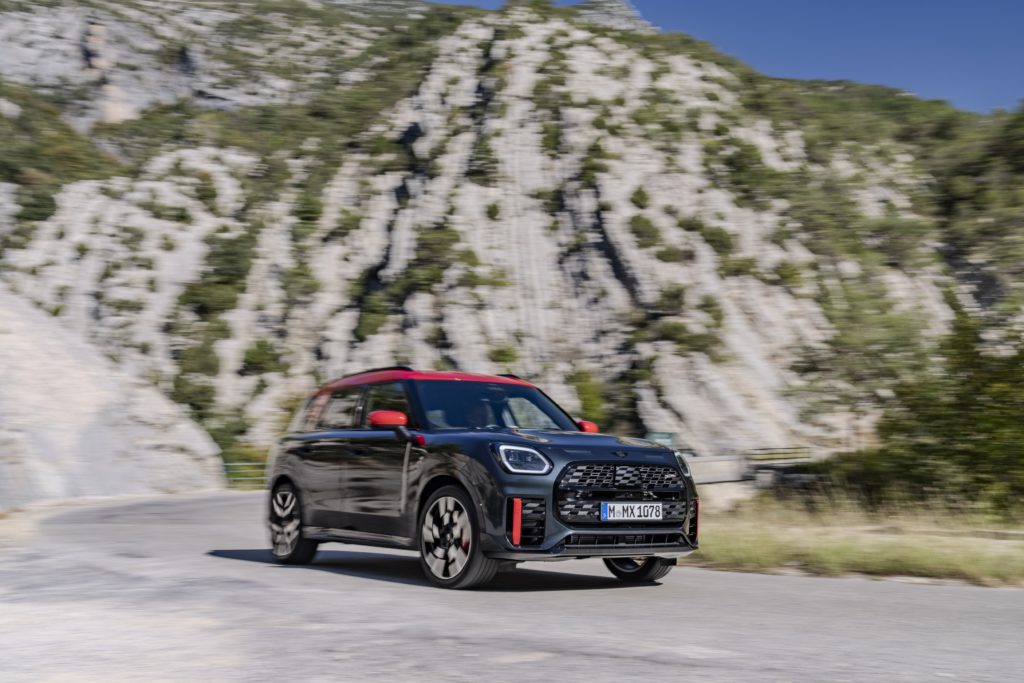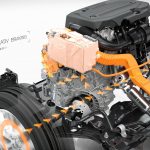4WD is just one of the many options available on cars these days concerning which wheels are driven.
It’s also vital to know which wheels are driving your car, particularly in the winter. This is because the driven wheels need to grip the road in slippery conditions. And knowing which wheels are going to grip will help the driver.
Why there’s confusion between AWD vs 4WD?
Cars can have the engine or motor powering the front wheels, the rear wheels, or all their wheels. Front or rear wheel drive are usually known as two-wheel drive.
Over time, people have become increasingly relaxed in how they refer to the cars that have all their wheels driven. They are frequently called four-wheel drive (4WD) or even 4×4 when in fact they’re All-Wheel Drive.

What is AWD?
Most cars that are described as four-wheel drive are really All-Wheel Drive or AWD, like the MINI above. Cars that are all-wheel drive are usually front-wheel drive but the car’s computer is clever enough to know when those driving wheels are struggling for grip and so sends power to the rear wheels too.
The system is a feature of many of the SUVs that are designed primarily for driving on-road. The advantage is that the more wheels an engine drives, the more fuel it uses. So by only driving two wheels for most of the time, AWD will save you fuel and therefore money.
The car’s computer can also juggle power between the wheels that have the most grip. So if the nearside front wheel and off-side rear wheel are gripping, say in a muddy field, but the others are spinning, the two wheels with the grip will get the power.
Most AWD systems operate automatically, only engaging the wheels that aren’t usually driven when they’re really needed. Confusingly, some cars that are all-wheel drive have all four wheels driven all the time.
A good example of this is Audi’s quattro system which was a full-time all-wheel drive system. That said, more recently, Audi has reverted to part-time all-wheel drive for fuel-saving reasons.
Advantages and disadvantages of AWD
Some cars are offered in two-wheel and all-wheel drive variants so why wouldn’t you choose AWD if it’s so much more competent? The answer is that it is both heavier (and so worse for fuel economy) and more expensive. This is because it needs more hardware and software to drive all four wheels.
The big advantage is that the car takes the decision making out of the driver’s hands. The car’s computer decides when all the wheels need to be driven and acts accordingly.
While AWD is fine for getting you out of a sticky situation, if you want to go hardcore off-roading you’re much better choosing a car with four-wheel drive.

What is 4WD?
Four-wheel drive is a more basic system than AWD. The four wheels are still driven as the name suggests but rather than being software driven, it features more hardware designed to make the car more capable in challenging conditions.
Four-wheel drive cars tend to have their rear wheels driven all the time and the driver has to manually engage the non-driven wheels. But some 4WD models have all wheels driven all the time.
Four-wheel drive systems also feature low and high range. Low range ensures the wheels turn more slowly, giving more grip in very slippery conditions. And many systems can be locked so power is sent to both the front and rear axles at the same time. This again ensures that vehicles can cope with slippery or uneven terrain.
Which is better?
It’s worth noting that the difference between four-wheel drive and AWD is further confused because some manufacturers call their systems 4×4 or 4WD, when in fact they are all-wheel drive.
As far as which is better, if you’re doing lots of off-road driving, 4WD is probably the one to go for. If you just want a system to keep you safe and get you through occasional slippery conditions, pick AWD.
If you’re expecting either 4WD or AWD to deliver a safer driving experience on snow or ice, you’re going to be sadly mistaken. There is a chance that having all the wheels driving at once will help. But if you really want to drive safely in snow, you need to equip your AWD or 4WD car with winter tyres or even all-season tyres.

I’ve been writing about cars and motoring for more than 25 years. My career started on a long-departed classic car weekly magazine called AutoClassic. I’ve since pitched up at Autosport, Auto Express, the News of the World, Sunday Times and most recently the Daily Telegraph. When I’m not writing about cars and motoring, I’m probably doing some kind of sport or working in my garden.







